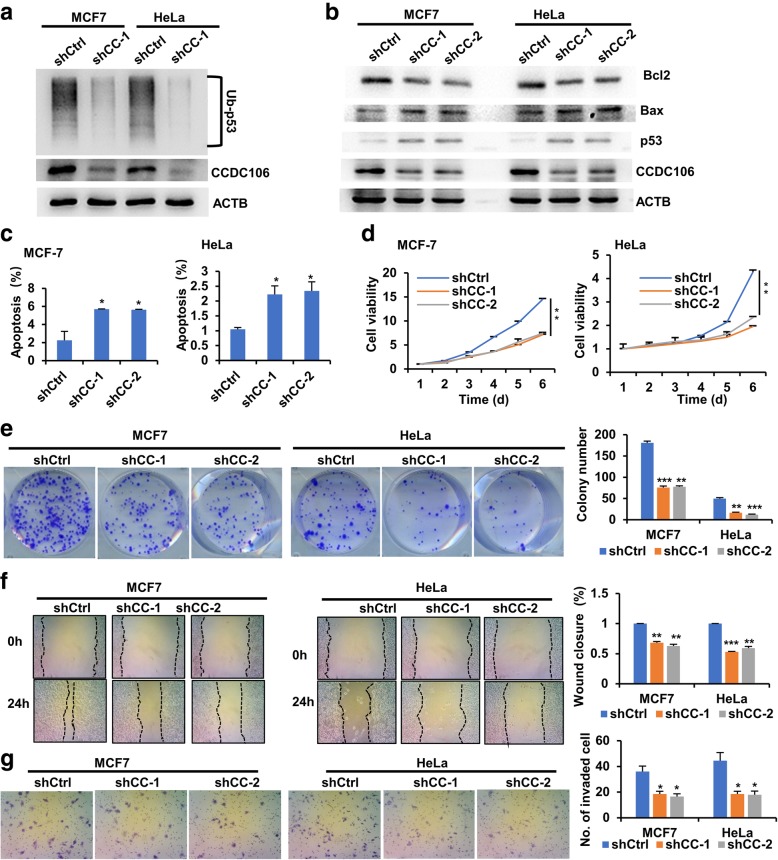Fig. 1.
Knockdown of CCDC106 stabilizes p53 and inhibits cell growth, migration and invasion of cancer cells. a Ubiquitination status of p53 in MCF7 and HeLa cells stably expressing scrambled shRNA (shCtrl) or CCDC106 shRNA-1(shCC-1). Cells were treated with MG132 for 4 h, and cell lysates were then prepared and immunoprecipitated with an anti-p53 antibody. The precipitated complexes were subjected to Western blotting (WB) using an anti-ubiquitin antibody to detect ubiquitinated p53 (Ub-p53). b The influence of CCDC106 knockdown on the levels of p53 and its targets. c The apoptosis rates were investigated by annexin V-FITC/PI double staining and FCM analysis (FCM graphs are shown in Additional file 1: Figure S1b). d Cell viability was determined by an MTT assay. e Representative images of cell colonies (left panel) and statistical analysis of the cell colony numbers (right panel). f Representative images (left panel) of a wound area at the indicated timepoint and the percentage of wound closure at 24 h after scratching (right panel). g Representative images (left panel) and statistical analysis (right panel) of invaded cells in the Transwell invasion assay. All the values are presented as the means ± S.D. for at least three independent experiments. Differences between control and experimental groups were analyzed by Student’s t-test; *p-value ≤0.05, **p-value ≤0.01, and ***p-value ≤0.001

